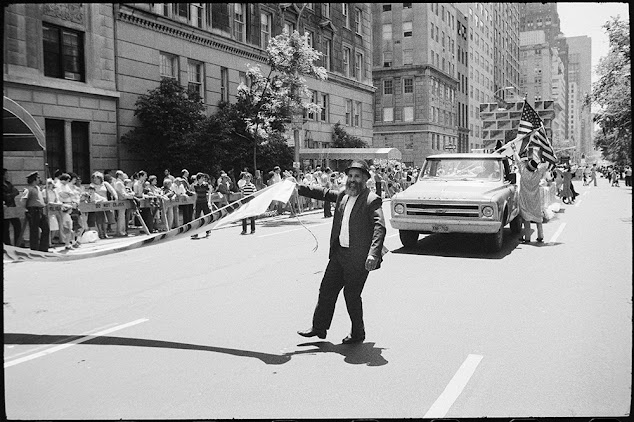Mindfullness, spirituality, and manual camera settings
My friend Harry recently wrote a thoughtful Facebook post about his approach to Orthodox Judaism, which he describes as the core of his identity. Our approaches to Jewish observance are very similar but he articulated it in a way that, strangely enough, got me thinking about my approach to street photography. It has to do with mindfulness.
Yes, my brain goes on unusual side-trips. Come with me on this one.New York, June 1980. © Mason Resnick
Harry wrote that as an Orthodox Jew:
• "I don’t shave at all or get a haircut for 33 days straight in the late spring and 21 days straight in the mid summer;
• "I fast completely, no food or drink, five days a year;
• "I keep kosher, say a prayer before and after each meal, and wear a head covering every day.
"I don’t see these constraints as limitations. Not at all. They are opportunities for a greater mindfulness."
Mindfulness. Doing things with purpose and awareness. Saying a blessing before eating a sandwich and blessings of thanks when done creates a state of mindfulness. How often have you eaten mindlessly? And how often have you taken pictures mindlessly?
This resonated with me on both a spiritual level and on a creative level, it helped me think about the intersection of inspiration and technical knowledge in the creative process.
Manual Camera Settings as a Tool for Mindfulness
When I'm at work as a professional photographer, I'll use every tool at my disposal in order to work efficiently and get what the client needs. Autoexposure or program modes are deployed as needed. Autofocus is almost always on. Similarly, in post processing, I'll use tools to refine the image, use compositing AI tools to create what the client needs that might not have existed in real life, if that's the kind of photo illustration they need.
It's a different story when I'm shooting for my self, when I'm doing street photography (everthing here I learned from watching Garry Winogrand and asking him questions):
• On the street, my camera of choice, which is a Leica M-series rangefinder camera, uses manual-focus lenses.
• I turn off the autoexposure features and set exposure manually. I chose my camera because the manual controls are especially easy to find and operate. I use the light meter to confirm exposure. I'm usually right.
• I set a fast shutter speed to reduce motion or camera blur, a mid-range aperture to get good depth of field, and then vary the ISO--the sensor's sensitivity to light, depending on time of day and whether it is cloudy or sunny out.
• If the light changes--a cloud obscures the sun, or I've crossed from the shady to the sunny side of the street, for instance, I quickly change aperture and shutter speed to compensate. This means I am constantly aware of my camera's setting and chaning light.
• My left pointer finger is always on the focus tab. I know what I'm focused on based on the position of the tab, so when I bring my camera up to my eye to frame the scene, it's already focused exactly where I want it.
• At the same time, I'm physically and mentally present in the scene, scanning and looking for something interesting to photograph in an interesting way.
All of this is a form of mindfulness. Rather than having technology making decisions for me that I might disagree with (AF focuses on the wrong thing, meter misled by a bright spot or contrast within the image), I make the decisions myself. I'd rather not fight the tech--that takes time, and it is distracting.
New York, Autumn 1980 © Mason Resnick
Mindfulness Takes Practice
Being a mindful photographer requires practice. Want to be able judge exposure just by looking at the lighting situation? It took me time, much trial and error, and many wasted exposures before I figured out how to adjust aperture and shutter speed by feel (which is kind of like touch-typing).
It's OK to make mistakes. Trust me—I have made them all. But study your mistakes, figure out what you did wrong. If you're shooting digitally, check the EXIF data, which will saves your camera settings. Learn from them, and keep going.
I'm a better photographer thanks to mindfulness. If you don't mind, give it a try! You might become a better photographer, too!
And let us say, Amen.





Comments
Post a Comment